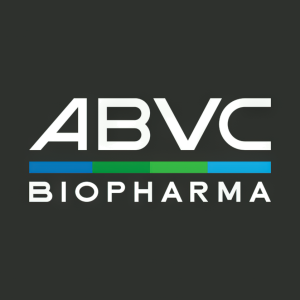ABVC BioPharma Announces Principal Investigator Meeting for Phase II Part 2 ADHD Clinical Study
ABVC Biopharma, Inc. (NASDAQ: ABVC) announced the Principal Investigator Meeting for the Phase II Part 2 ADHD study of ABV-1505 set for February 14, 2022. The study, involving approximately 100 patients, aims to further evaluate the therapeutic value of PDC-1421. Results from Part 1 indicated an 83.3% improvement in ADHD symptoms, supporting the drug's effectiveness and safety. The trial is expected to begin in Q1 2022 and conclude by the end of the year, aligning with the growing ADHD drug market projected to reach $24.9 billion by 2025.
- Phase II Part 2 ADHD study initiated with 100 patients, supporting broader clinical development.
- Part 1 results showed 83.3% improvement in ADHD symptoms, confirming the drug's therapeutic value.
- None.
Insights
Analyzing...
Fremont, CA, Feb. 02, 2022 (GLOBE NEWSWIRE) -- via NewMediaWire -- ABVC Biopharma, Inc. (NASDAQ: ABVC), a clinical stage biopharmaceutical company developing therapeutic solutions in oncology/hematology, CNS, and ophthalmology, today announced that the Principal Investigator Meeting for the ABV-1505 Phase II Part 2 ADHD clinical study will be held on February 14, 2022. Principal investigators from the University of California San Francisco (“UCSF”) Medical Center and five prestigious Taiwan medical centers, including National Taiwan University Hospital, Taipei Veterans General Hospital, Linkou Chang Gung Memorial Hospital, Kaohsiung Chang Gung Memorial Hospital and Cheng Hsin General Hospital, will virtually participate in the meeting to discuss potential further improvement to the study protocol prior to initiation.
This randomized, double-blind, placebo-controlled Part 2 study involves a total of approximately 100 patients from the United States and Taiwan. Part 1 of the Phase II study on ABV-1505 was conducted at UCSF from January to July of 2020 and received by the U.S. Food & Drug Administration in October of 2020, without comment. The Part 2 study is targeted to begin in the first quarter of 2022 and expected to be completed at the end of 2022.
The Part 1 study with six adult patients found that the active ingredient of ABV-1505, PDC-1421, was safe, well-tolerated and effective during the treatment and follow-up period. For the primary endpoints, the percentage of improvement in Adult Attention-Deficit/Hyperactivity Disorder Rating Scale-Investigator Rated-IV (ADHD-RS-IV) score from baseline through eight weeks of treatment was
“We expect to have a productive discussion finalizing the Part 2 study protocol on February 14th,” said Dr. Howard Doong, Chief Executive Officer of ABVC BioPharma. “Site initiation visits will quickly follow the meeting to initiate the study at all participating sites.” Further, Dr. Doong emphasized the importance of ABVC BioPharma’s focus on botanical sourcing in drug development. “Our clinical trials continue to demonstrate the significant therapeutic benefits of our plant-based medicines with few - if any - side effects in treating certain serious medical conditions.”
According to Grand View Research’s market research report, the ADHD drug market was valued at US
1 Attention Deficit Hyperactivity Disorder Market Size, Share & Trends Analysis Report by Drug Type (Stimulant, Non-stimulant), By Demographic, By Distribution Channel (Hospital & Retail Pharmacy), And Segment Forecasts, 2019 – 2025. Retrieved from https://www.grandviewresearch.com/industry-analysis/attention-deficit-hyperactivity-disorder-adhd-market.
About ABVC BioPharma
ABVC BioPharma is a clinical-stage biopharmaceutical company with an active pipeline of six drugs and one medical device (ABV-1701/Vitargus) under development. For its drug products, it is focused on utilizing its licensed technology to conduct proof-of-concept trials through Phase II of the clinical development process at world-famous research institutions (such as Stanford University, University of California at San Francisco, and Cedars-Sinai Medical Center). For Vitargus, the company intends to conduct the clinical trials through Phase III at various locations throughout the globe.
Forward-Looking Statements
This press release contains “forward-looking statements.” Such statements may be preceded by the words “intends,” “may,” “will,” “plans,” “expects,” “anticipates,” “projects,” “predicts,” “estimates,” “aims,” “believes,” “hopes,” “potential,” or similar words. Forward-looking statements are not guarantees of future performance, are based on certain assumptions, and are subject to various known and unknown risks and uncertainties, many of which are beyond the Company’s control, and cannot be predicted or quantified, and, consequently, actual results may differ materially from those expressed or implied by such forward-looking statements. Such risks and uncertainties include, without limitation, risks and uncertainties associated with (i) our inability to manufacture our product candidates on a commercial scale on our own, or in collaboration with third parties; (ii) difficulties in obtaining financing on commercially reasonable terms; (iii) changes in the size and nature of our competition; (iv) loss of one or more key executives or scientists; and (v) difficulties in securing regulatory approval to proceed to the next level of the clinical trials or to market our product candidates. More detailed information about the Company and the risk factors that may affect the realization of forward-looking statements is set forth in the Company’s filings with the Securities and Exchange Commission (SEC), including the Company’s Annual Report on Form 10-K and its Quarterly Reports on Form 10-Q. Investors are urged to read these documents free of charge on the SEC’s website at http://www.sec.gov. The Company assumes no obligation to publicly update or revise its forward-looking statements as a result of new information, future events or otherwise.
Contact:
ICR, LLC
Lucy Peng
Phone: +1 646-677-1872
Email: Lucy.Peng@icrinc.com








